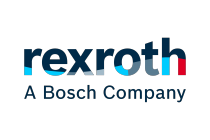Emerging Innovations Enabling Cobalt-free Batteries, 2020 Report - ResearchAndMarkets.com
The "Emerging Innovations Enabling Cobalt-free Batteries" report has been added to ResearchAndMarkets.com's offering.
This research report focuses on the emerging innovations and the latest achievements in the cobalt-free battery chemistries and the respective technology readiness levels. In addition, recent trends and developments across the industry, government-level initiatives supporting research & development activities, along with the challenges present in the global cobalt supply chain is also provided.
The transition towards a sustainable energy eco-system with e-mobility and renewable energy integrated power grids require efficient energy storage solutions. As of now the most promising candidate of choice has been the Lithium-ion battery (LIB) chemistry, in which, a graphite anode is paired with a lithium cobalt oxide cathode, offering high energy density.
However, LIBs are known to have a price challenge along with another serious challenge, the availability of raw materials for battery manufacturing. Battery manufacturing typically requires lithium, nickel, magnesium, and cobalt amongst other metals. Cobalt, in particular, is a matter of concern for battery and EV manufacturers due to Cobalt's vulnerability to a fragile global supply chain.
Battery manufacturers across the globe are continuously working towards the development of cobalt-free battery chemistries, and are also utilizing data-driven methods to identify and fabricate materials which have the potential to substitute cobalt in battery chemistries.
Key Topics Covered
1. Executive Dashboard
1.1 Research Scope - Foreseeing Challenges and Solutions
1.2 Analysis Framework
1.3 Research Methodology
2. Growth Environment Overview
2.1 Technology Definition and Indications
2.2 Technology Comparison - Cobalt Based and Cobalt-free Batteries
2.3 Manganese and Nickel as a Substitute for Cobalt in Major Cobalt Free Battery Chemistries
2.4 Thermal Stability and Limited Cycle Life Hindering the Adoption of Cobalt Free Battery Chemistries
2.5 Cobalt-free Batteries Enabling a Sustainable Future for EV Growth
2.6 Industry Moving towards Cobalt-free Batteries due to Challenges in Cobalt Supply Chain
2.7 Prominent Movers and Shakers of the Cobalt-Free Battery Sector
2.8 Regulatory Support Driving Innovations and Adoption of Cobalt Free Chemistries
3. Companies to Action
3.1 Cobalt-free Battery Based on Materials Derived from Sea Water
3.1.1 Enabling Cost effective Battery Design Utilizing Iodine as a Cathode Element
3.2 Cobalt Free Lithium-ion Battery Based on High Nickel Content
3.2.1 Aluminium as a Cobalt Replacement Enabling Cost Effective Cobalt Free battery
3.3 Metal Fluorides in Solid Polymer Electrolyte: Enabling Cobalt Free Batteries
3.3.1 Iron Fluoride as a Cobalt Replacement Enabling Higher Energy Density, Ideal for EV Applications
3.4 Lithium Nickel Manganese Oxide (LNMO) Cathode Material Enabling Cobalt-free Battery
3.4.1 Cost Effective Manufacturing, High Energy Density, and Fast Charging Capabilities Driving Advancements in LNMO Batteries
3.5 Nanomaterial Composites Based Cobalt Free Battery
3.5.1 Quick Charging Capability and High Energy Density Driving Research in Nanomaterial Composite Based Batteries
3.6 Fast Charging Battery Based on Organic Compounds and Nanomaterials
3.7 Battery for EV Applications without Nickel, Cobalt, Aluminum, and Magnesium
4. Growth Opportunities
4.1 Advanced Technologies Paving the Way Ahead for Cobalt Free Battery Chemistries
4.2 North America & Europe Leading R&D investments for Advancement in Cobalt Free Battery Technologies
4.3 Integration Within the Battery Supply Chain Required for Streamlining Advancements in Cobalt Free Battery Landscape
5. Technology and IP - Landscape
5.1 China Leads Research & Development Activity in Cobalt-free Batteries
6. Key Contacts
6.1 Industry Contacts
For more information about this report visit https://www.researchandmarkets.com/r/mq8o31
View source version on businesswire.com: https://www.businesswire.com/news/home/20200723005579/en/




